“For every American, this has to be the proudest day of their lives. And for people all over the world, I am sure they too join with Americans in recognizing what an immense feat this is. Because of what you have done, the heavens have become a part of man’s world.For one priceless moment in the whole history of man, all the people on this Earth are truly one.”
~President Richard M. Nixon
Congratulatory call to Neil Armstrong and Buzz Aldrin

Yes, it was a very important date in history, but there were several other events which occurred on July 20 in history that none of us should ever forget.
===========================
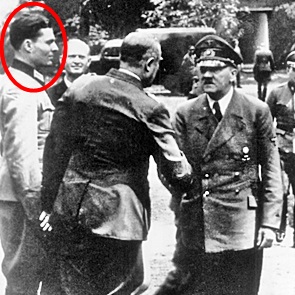
1944 – Adolf Hitler was only slightly wounded when a bomb planted by a would-be assassin exploded at the German leader’s Rastenburg headquarters.
High German officials had made up their minds that Hitler needed to die. He was leading Germany in a suicidal war on two fronts and assassination was the only way to stop him.
Colonel Claus von Stauffenberg, chief of the army reserve, had been given the task of planting a bomb during a conference that was to be held at Berchtesgaden, but was later moved to Hitler’s “Wolf’s Lair,” a command post at Rastenburg, East Prussia.
Stauffenberg planted the explosive in a briefcase, which he placed under a table, then quickly left. Hitler was studying a map of the Eastern front as Colonel Heinz Brandt, trying to get a better look at the map, moved the briefcase out of place, farther away from where Hitler was standing.
At 12:42 p.m. the bomb went off.
After the explosion, Stauffenberg, believing Hitler was dead, flew to Berlin to initiate Operation Valkyrie, a plan to use Germany’s reserve army to stage an uprising against the Nazi regime.
General Friedrich Olbricht, Chief of the Armed Forces Reserve Office, and his aide, Colonel Albrecht Mertz von Quirnheim, assisted by mobilizing the Replacement Army.
However, Hitler had been only wounded. He was charred and even suffered the temporary paralysis of one arm – but he was very much alive.
The plan to seize key sites in Berlin using units from the reserve army began to falter. Many consider one of the overwhelming factors which prevented this coup from gathering any real pace was the failure of troops on the ground to gain control of the communications coming into and out of Berlin.
Hitler and his commanders in the Wolf’s Lair were able to broadcast a speech after the coup which in turn led to quick demise of the coup as a whole. As a result, the Nazi leadership was able to regain control using its own loyal troops within a few hours.
Olbricht was arrested at his headquarters by soldiers from the Berlin garrison. Later that evening, Colonel-General Friedrich Fromm held a hastily arranged court martial in an attempt to protect himself from being exposed as a silent conspirator.
Olbricht, Quirnheim, Stauffenberg, and his aide Werner von Haeften, were taken outside to the courtyard in the early hours of July 21 and executed by firing squad.
Fromm’s defection did not save him. He was executed by firing squad in 1945. In fact, the failure of the assassination attempt and the intended military coup d’état resulted in the arrest of more than 7,000 people, many of whom were executed.
In the aftermath of the assassination attempt, Hitler and his top officials took an even firmer grip on Germany and its war machine.
The Nazi leader who had once said, “No man can fashion world history unless upon his purpose and his powers there rests the blessings of this Providence,” became certain that fate had spared him.
“Having escaped death in so extraordinary a way, I am now more than ever convinced that the great cause which I serve will survive its present perils and that everything can be brought to a good end.”
Note: The photograph showing Stauffenberg (circled in red) and Hitler together was taken five days before the assassination attempt.
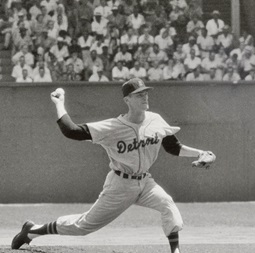
1958 – Detroit Tigers right-hander Jim Bunning threw his first of two no-hitters by blanking the Boston Red Sox 3-0 during the first game of a doubleheader at Fenway Park.
He threw his second with the Philadelphia Phillies against the New York Mets in 1964.
What made this a significant date, worthy of making this column’s highlights?
I was eight years old and it was the first Red Sox game I ever attended. I clearly recall watching Ted Williams send Tigers’ right fielder Al Kaline back to the bullpen wall for the final out.
Idle Thought: How many 8-year old kids can say they saw three future Hall of Fame players – Williams, Kaline and Bunning (who later became a U.S. Congressman and U.S. Senator from Kentucky) – play in the same game?
Oh, and the Tigers’ shortstop that day was a guy named Billy Martin. New York Yankee fans certainly remember him.
That game was the first of many Red Sox games I attended with my father and it began my lifelong love of baseball.
Thanks, Dad.
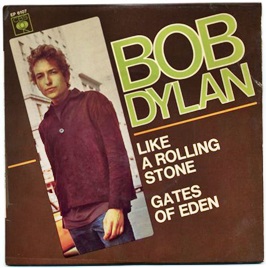
1965 – Bob Dylan’s Like A Rolling Stone was released.
Although Columbia Records tried to make the record more “radio friendly” by cutting it in half and spreading it over both sides of the vinyl, Dylan demanded that the full duration of the recording (6 minutes, 13 seconds) should be placed on one side and that radio stations play the song in its entirety.
The success of Like A Rolling Stone was influential in changing the music business convention regarding the length of singles, whereby they were restricted to durations of less than three minutes.
At an auction in 2014, Dylan’s handwritten lyrics to the song sold for $2 million
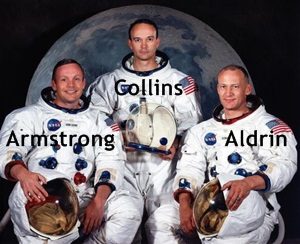
1969 – At 4:17 p.m. EDT, Apollo 11’s crew successfully made the first manned landing on the Moon in the Sea of Tranquility.
Astronaut Neil Armstrong noted the momentous occasion with the words, “Houston, Tranquility Base here. The Eagle has landed.”
Six and a half hours later, one of the most significant events in history happened.
At 10:56 p.m. EDT, Armstrong, 240,000 miles from Earth, spoke these words to more than a billion people watching at home: “That’s one small step for [a] man, one giant leap for mankind.”
Stepping off the lunar landing module Eagle, Armstrong became the first human to walk on the surface of the Moon.
“Buzz” Aldrin joined him on the surface at 11:11 p.m., and together they took photographs of the terrain, planted a U.S. flag, ran a few simple scientific tests, and spoke with President Richard Nixon via Houston.
By 1:11 a.m. on July 21, both astronauts were back in the lunar module and the hatch was closed.
The two men slept that night on the surface of the Moon, and at 1:54 p.m. the Eagle began its ascent back to the command module, piloted by Michael Collins.
On July 22 Apollo 11 began its journey home, safely splashing down in the Pacific Ocean on July 24.
First Supper/Last Supper Factoid: He may have been the second man to walk on the Moon, but Aldrin was the first in another category.
Minutes after the lunar module touched down on the Sea of Tranquility, Aldrin radioed back to Earth, “I’d like to take this opportunity to ask every person listening in, whoever and wherever they may be, to pause for a moment and contemplate the events of the past few hours and to give thanks in his or her own way.”
Then Aldrin — an elder at the Webster Presbyterian Church in Webster, Texas — switched off the radio, opened small plastic containers of bread and wine and read privately from the Gospel of John.
On reflection in his 2009 book, Aldrin felt that “Perhaps, if I had it to do over again, I would not choose to celebrate communion. Although it was a deeply meaningful experience for me, it was a Christian sacrament, and we had come to the Moon in the name of all mankind – be they Christians, Jews, Muslims, animists, agnostics, or atheists. But at the time I could think of no better way to acknowledge the enormity of the Apollo 11 experience than by giving thanks to God.”
Orville and Wilbur Factoid: Neil Armstrong carried a piece of wood from the Wright brothers’ 1903 Wright Flyer’s left propeller and a piece of fabric from its wing.
Be Prepared Factoid: President Nixon had a speech prepared in case Armstrong and Aldrin didn’t make it off the Moon.
Speechwriter William Safire had crafted this opening line: “Fate has ordained that the men who went to the Moon to explore in peace will stay on the Moon to rest in peace.”
What’s In A Name Factoid: Buzz Aldrin’s mother’s maiden name was … Marion Moon.
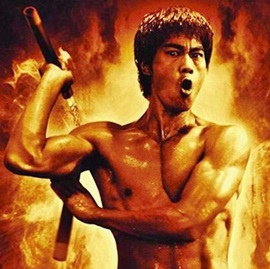
1973 – Actor Bruce Lee died at the age of 32.
After complaining about a minor headache, Lee, one of the most influential martial artists in the world, was offered a prescription painkiller called Equagesic. After taking the pill, he lapsed into a coma and was unable to be revived.
A nine-day coroner’s inquest determined that Lee had a hypersensitive reaction to an ingredient in the pain medication that caused a swelling of the fluid on the brain, resulting in a coma and death.
Although many American fans will remember him for his role of Kato on television’s The Green Hornet (a colossal waste of his talents), Lee is most remembered for his roles in five feature-length martial arts films in the early 1970s: The Big Boss, Fist of Fury, Way of the Dragon, Enter The Dragon and The Game of Death.
In 1999, Lee was named by Time magazine as one of the 100 most influential people of the 20th century.
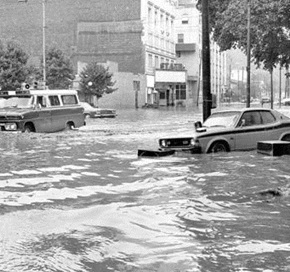
1977 – A flash flood hit Johnstown, PA, killing 84 people and causing $300 million in damage.
A deluge of rain hit the area around Johnstown during the night of July 19 and the dams in the area over-topped and failed. The largest dam to fail was the Laurel Run Dam, releasing over 101 million gallons of water that poured through the borough of Tanneryville, killing 41 people.
The combination of other five area dams released another 27 million gallons, killing 44 more people in 14 other boroughs.
But it wasn’t the first – or even the second – time the city had been hit hard by flooding.
Flood #1: The great Johnstown flood of May 31, 1889 is remembered as the worst disaster by dam failure in American history. In fact, with 2,209 victims, it was the greatest single-day civilian loss of life in this country before September 11, 2001.
Flood #2: On March 17, 1936, Johnstown experienced a devastating flood caused by heavy runoff from melting snow and three days of rain. Before the waters receded the following day, the flood had risen to 14 feet in some areas. About two dozen people died in the flood, while 77 buildings were destroyed, with nearly 3,000 more severely damaged.
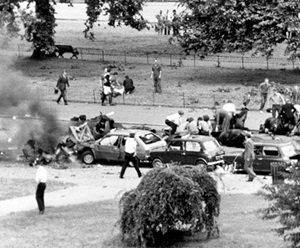
1982 – Members of the Provisional Irish Republican Army detonated two bombs during British military ceremonies in Hyde Park and Regent’s Park, both in central London.
The explosions killed 11 military personnel: four soldiers of the Blues & Royals at Hyde Park, and seven bandsmen of the Royal Green Jackets at Regent’s Park.
Forty-seven others were injured.
No one has ever been charged in connection with the Regent’s Park bombing, but in 2013 (as shown in the video below), John Anthony Downey was charged with murder in relation to the Hyde Park bomb and intending to cause an explosion likely to endanger life.
On February 25, 2014, it was revealed that Downey’s trial had collapsed after the presiding judge had ruled that a letter sent by the Police Service of Northern Ireland to Downey in 2007 assured him that he would not face criminal charges over the attack.
Although the assurance was made in error and the police realized the mistake, it was never withdrawn, and the judge ruled the defendant had been misled and prosecuting him would be an abuse of executive power.
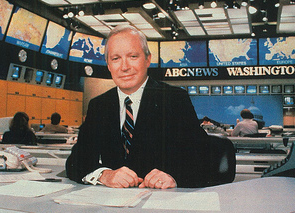
1983 – ABC World News Tonight anchor Frank Reynolds died of acute viral hepatitis at the age of 59.
A stickler for accurate reporting, he became visibly upset during live coverage of the attempted assassination of President Ronald Reagan on March 30, 1981, when the three major broadcast networks erroneously reported that White House Press Secretary James Brady had died as a result of a fatal gunshot wound to the head.
Faced with conflicting information on Brady’s medical condition, Reynolds angrily admonished (on the air) fellow staff members, saying “Let’s get it nailed down… somebody… let’s find out!”
Reynolds Factoid: He served in the Second World War as a combat infantryman with George S. Patton’s Third Army, advancing to the rank of Staff Sergeant. He was the recipient of the Purple Heart Medal for wounds received during hand to hand combat with soldiers of the elite German SS.
He is buried in Arlington National Cemetery.
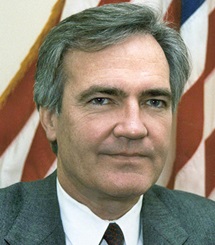
1993 – White House deputy counsel Vince Foster was found shot to death in a park near Washington, D.C., in an apparent suicide. He was 48.
He had been a partner at Rose Law Firm in Little Rock, Arkansas, where he was a colleague and friend of First Lady Hillary Rodham Clinton. He was reportedly unhappy with work in politics and spiraled into depression.
Five official governmental investigations ruled Foster’s death a suicide, but several conspiracy theories emerged – and in the minds of many, still exist.
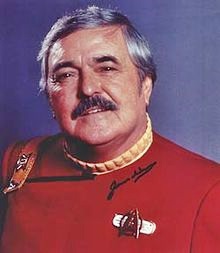
2005 – Actor James Doohan died from complications of pulmonary fibrosis and Alzheimer’s disease. He was 85.
He is best known for his role as Montgomery “Scotty” Scott in the television and film series Star Trek.
The catchphrase for which Doohan will be best remembered was said to – and not by – him.
Adopted now as a throw-away line in any desperate situation, “Beam me up, Scotty!” has become a part of the cultural landscape.
Scotty Factoid: Although he spoke with a thick Scottish accent in Star Trek, Doohan was not, in fact, a Scot, but an Irish-Canadian, born in Vancouver, British Columbia.
A master of dialects from his early years in radio, he tried seven different accents when he auditioned for the role of chief engineer.
“The producers asked me which one I preferred,” Doohan later said. “I believed the Scot voice was the most commanding. So I told them, ‘If this character is going to be an engineer, you’d better make him a Scotsman.'”
Scotty Factoid #2: As a captain in the Royal Canadian Artillery Regiment, he lost a finger on the first morning of the D-Day landings in Normandy.

2007 – Tammy Faye Messner died after a prolonged battle with cancer. She was 65.
She initially gained notice for her work (and fondness for heavy makeup and false eyelashes) with The PTL Club, a program she co-founded with her then-husband Jim Bakker in 1974. In 1978, she and Bakker built Heritage USA, a Christian theme park in South Carolina.
Messner garnered significant publicity when Jim Bakker was indicted, convicted, and imprisoned on numerous counts of fraud and conspiracy in 1989, resulting in the dissolution of The PTL Club.
After divorcing Bakker in 1992, she married property developer Roe Messner in 1993.
Her problems were far from over.
In 1996, Roe was convicted of bankruptcy fraud, having claimed to have owed nearly $30 million to more than 300 creditors in 1990.
At his sentencing hearing, he said he could not afford to treat his prostate cancer because he lacked health insurance. He was sentenced to and served 27 months in prison.
Bakker/Messner/Hahn Factoid: The Bakkers’ control of PTL collapsed in 1987 after revelations that $287,000 had been paid from the organization to buy the silence of PTL secretary Jessica Hahn, who claimed Jim Bakker had raped her.
Messner had built much of Heritage USA as well as numerous other large churches. He was the one who produced the money for the payment to Hahn, later billing PTL for work never completed on the Jerusalem Amphitheater at Heritage USA.
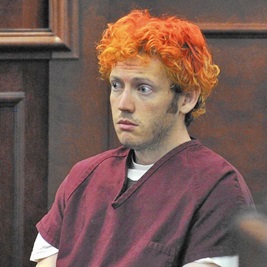
2012 – James Holmes opened fire at a movie theater in Aurora, Colorado, killing 12 people – the youngest a 6-year-old girl – and injuring at least 70 others.
The Aurora shooting took place shortly after the start of a crowded midnight showing of The Dark Knight Rises, which opened across the United States that day.
Holmes fired 76 shots in the theater: six from a shotgun, 65 from a semi-automatic rifle, and five from a .40-caliber handgun.
It was the deadliest mass shooting in Colorado since the 1999 Columbine shooting, in which 12 high school students and a teacher were murdered.
Investigators learned that in the months leading up to the Aurora movie theater shooting, Holmes had acquired weapons from Colorado gun shops and ordered thousands of rounds of ammunition online.
Holmes chose the Century 16 Theater for his attack because that specific theater had doors that he could lock in order to increase the number of casualties, as well as being in an area where police response would take longer.
Holmes allegedly considered other locations for a mass shooting, such as an airport, but ruled it out because an airport would have too much security. He also wrote his reasoning that an attack on an airport would be confused as an act of terrorism, saying, “Terrorism isn’t the message. The message is there is no message.”
Holmes – who had no criminal background – offered no motive for the shooting spree and was charged with 166 counts of murder, attempted murder and weapons charges. In May 2013, he pleaded not guilty by reason of insanity.
In 2015, Holmes was convicted and sentenced to 12 consecutive life sentences (plus 3,318 years) without parole.
In September 2015, Holmes was moved to the Colorado State Penitentiary. One month later, he was assaulted by another inmate. As a result of the attack, he was transferred to USP Allenwood in Gregg Township, Union County, Pennsylvania where he remains.
Compiled by Ray Lemire ©2005-2020 RayLemire.com / Streamingoldies.com. All Rights Reserved.
Wow this was such a heavy day in history. I really enjoyed reading all of the stuff surrounding the attempt on Hitler. Somethings you just never knew. Great to be brought to in the know. You did leave out one important thing that happened on July 20, in 1946. My brother Bob Moody was born. It made my dad extremely happy since he already had two daughters, and this is a boy To Cari on his name. Thanks Ray for another great history lesson.
Thank you, Sandy. I’ll be sure to include Bob next year. 😉
An intense day in history. Too bad the coup didn’t work, many lives would have been saved.
No one should ever shorten a Bob Dylan song! Ever.
Poor Johnstown.
Wow didn’t know that Bruce Lee died from taking someone else’s medication, terrible waste. You never know when it will be your time to depart..live life to the fullest! Carpe Diem!
Stay cool and safe and thanks as always.
Thank YOU, Donna. 🙂